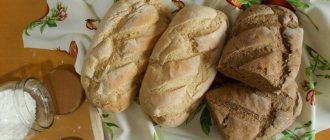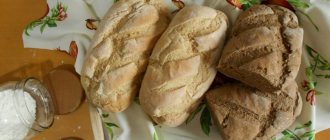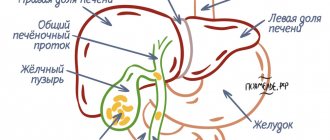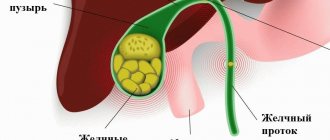Fecal stones (coprolites) are dense formations (sometimes very hard) that have formed in the colon during prolonged stagnation of intestinal contents. There can be one stone or many. Sometimes they reach a diameter of 10-15 cm. The stones may be mixed with mucus and sometimes have a layered structure.
What are fecal stones
As mentioned above, fecal coprolites are intestinal feces clumped into clumps that have become rock hard. The danger of their occurrence is that they provoke stagnation inside the colon, remaining in it for a long time.
Due to their hardness, formations can not only cause injury to the surface layer of the intestine, but also contribute to the formation of bedsores inside it and the development of erosive processes. As a result, a pathology such as peritonitis can form - inflammation of the peritoneum.
Additionally, if hardened stool forms a lump that is too large, it can cause severe internal bleeding.
Causes of stones
Most often, intestinal stones form in older people, whose intestinal system is subject to age-related changes. In addition, people with health problems are at risk:
- atony or hypotension of the rectum;
- Parkinson's disease;
- persons who abuse fatty foods.
The main causes of stones are:
- unbalanced diet, abundance of unhealthy foods, fast food, sweets;
- passive lifestyle;
- alcohol abuse and smoking;
- accidentally eaten bones of berries, fish or animals;
- undigested food remains;
- penetration of foreign objects, tablets, hairs into the colon.
It has been proven that coprolites are formed when antacid drugs are used in large doses. Under the influence of bacteria, residual particles undergo rotting for a long time and collect into lumps. If fecal deposits are not removed in a timely manner, the process may worsen. This will lead to intestinal obstruction, which can only be cured by surgery.
Stones can also form from accidentally swallowed berry seeds or animal bones, pills, poorly cooked food and hair. Sometimes large gallstones and urinary stones enter the intestines through fistulas. Fecal stones usually form in old age.
Symptoms of the formation of fecal stones in the intestines
It is unlikely that it will be possible to determine in the early stages that the intestines are gradually becoming clogged with coprolites, since coprolites in small quantities do not cause any discomfort to a person. He just doesn't feel them. However, they gradually turn into fecal plugs and obstructions. In other words, the passage for bowel movements is blocked, and the mass of stones is gradually pumped up and becomes larger.
It is at this stage that symptoms familiar to people who have suffered from this disease begin to appear:
- headache attacks become more frequent, quite noticeable and causing serious discomfort;
- immunity decreases, gradually losing a significant part of its protective function, as a result the patient catches one cold after another;
- since the passages from the intestines are blocked, a person either has difficulty defecating, or he simply becomes constipated and cannot go to the toilet;
- various allergic reactions occur that previously did not bother the patient;
- gas formation inside the intestines becomes very active, which also leads to obvious flatulence;
- constant pain appears in the abdomen, which can be periodically supplemented by cramps;
- the general condition of the patient is sluggish, severe weakness is felt;
- food ceases to be desirable, appetite is completely absent;
- obvious swelling occurs in the area under the eyes, “bags” form;
- a white or yellow coating may appear on the tongue;
- sometimes people may begin to burp frequently, and the smell coming with the burp is very, very unpleasant.
Cleansing with porridge
At all times, porridges made from whole grains have helped people get rid of accumulated waste, toxins, and fecal impactions. The dish optimally strengthens the intestinal walls and promotes rapid regeneration of existing microdamages.
Porridge is quite easy to prepare. It is enough to combine rice and oats in equal volumes. You will need about 200 g of the mixture. The cereals are thoroughly washed. Boil over moderate heat until fully cooked.
It is recommended to eat healing porridge in the morning, without adding oil. To improve the taste, you can add pieces of various fruits.
How to diagnose fecal stones
Since fecal stones in the intestines, forming and accumulating, cause serious harm to the organ, its functioning is impaired. It is extremely undesirable to take the required violations to the extreme, as they will lead to even more serious pathology. Coprolites, having hardened and accumulated, can injure the intestinal walls, subsequently influencing the formation of various erosion processes.
Depending on the stage to which the disease has reached, it is necessary to carry out the following diagnostic measures.
Step 1
. First of all, it is necessary to perform the non-instrumental part of the inspection. With its help, many experienced doctors are already able to make a diagnosis. We are talking about palpation - probing the peritoneum. The procedure is carried out exclusively with the help of the doctor’s hands, and he can ask the person various questions, for example, whether he experiences any pain.
Please note that in most cases, palpation alone is not enough to establish an accurate diagnosis. This method is effective only for detecting a disease whose stage is late. At this time, the stones have already gathered into formations of quite impressive sizes, and can be detected by probing.
Step 2
. To determine the location of the accumulation of coprolites, it is necessary to take an x-ray.
Step 3
. The most important instrumental research is being carried out, in which a special device is used. It's called an endoscope. It looks like a tube with a small camera attached to it. It is necessary so that you can visually examine changes inside the organ by actually examining it.
Using an endoscope, you can not only detect a fecal impaction, but also view the entire surface of the rectum from the inside.
Step 4
. Diagnosis is also carried out using ultrasound. This method is very similar to an x-ray; sometimes, if one of the examinations has already been carried out, the second is not even prescribed.
All of the above procedures are usually used in diagnosing the formation of coprolites in the adult population. Children and adolescents are usually satisfied with palpation and radiographic results. The fact is that children's intestines are small, and it is much easier to feel the stones inside them than in an adult.
As soon as the doctor feels a dense formation in the child’s peritoneum, located in the intestinal area, he will give a referral for an X-ray examination, after which the location and other characteristics of the coprolites will be determined.
Very often, children, even those who eat properly, suffer from the formation of fecal stones in the intestines. This usually occurs due to the presence of any congenital pathologies that provoke various types of ailments. This also applies to fecal stones.
Myths regarding treatment
Before we move on to considering methods for treating fecal stones, it is necessary to debunk very dangerous myths that circulate on the Internet and are passed on by word of mouth.
- The first myth says that fecal stones from the intestines at any stage can be removed by taking laxatives. No and no again. If you listen to people who give you such blatant advice, you may well end up dying. The fact is that in the later stages of the disease, this will only lead to the movement of stool that has not accumulated into stones, which will not be able to pass through the plug, as a result of which, most likely, you will experience internal bleeding, since the stool will cause many different injuries to the intestines.
- The second, very dangerous myth says that you can cure fecal stones at home, on your own, without going to the hospital. This is also fundamentally wrong, since, without having sufficient knowledge to purchase certain medications that are suitable specifically for your case, plus, without the ability to independently diagnose, you, even after consulting with pharmacists, are unlikely to be able to cure the disease, but will aggravate it it will work out for sure.
- Folk recipes are the best remedy for coprolites, says the third myth. It cannot be said unequivocally that there are not various infusions or other natural products that can help with the problem of the formation of fecal stones. So, in the initial stages of their formation, when the lumps are small and the plug is completely absent, you can drink a certain amount of castor oil, thereby cleansing the intestines. However, in the later stages, folk remedies will not help you, even if you drink the entire bottle of castor oil. But, again, they are capable of making the situation worse.
- Even in the initial stage of coprolites formation, surgical intervention is necessary to remove them. Because of this misconception, many people endure discomfort in the intestines, pain, constipation, just to avoid going under the knife. As a result, they still end up on the operating table, as they bring the disease to an extreme stage, when it is no longer possible to endure.
Let's summarize the myths discussed in the table.
Table 1. Myths about the treatment of fecal stones
| Myths | Consequences |
| Taking laxatives helps remove stones | 1. The fecal plug will not release the accumulated masses from the intestines, and you may develop complications. 2. Due to the movement of large fecal stones, injuries are caused to the intestines, sometimes leading to bleeding. |
| The ability to heal stones yourself at home | Failure to self-diagnose leads to the acquisition of inappropriate medications that aggravate the disease. |
| The use of traditional recipes is more effective than specialized medications | Home remedies can only have a positive effect in the early stages. |
| Surgery is necessary at any stage of stone formation | This misconception is fundamentally wrong, since in the first stages, conservative, that is, drug treatment, helps to remove coprolites. |
The presented list is not all the misconceptions that reign in the minds of residents of our state and other countries. There is nothing strange in this, because people ignorant of medicine can easily be convinced that a mug of herbal decoction can cure any complex disease. It is important that, if possible, you dispel such beliefs in your own friends and acquaintances, as well as family members, so that if a problem arises, they do not lose valuable time in which they can heal without complications.
Folk remedies
Traditional medicine, more than ever, has its own approach to getting rid of fecal stones at home.
- Castor oil . To prepare a cleanser, you should take castor oil at the rate of 1 gram per 1 kilogram of human weight. Heat the oil using steam. Squeeze lemon juice in an amount of 2 parts juice to 1 part oil. Quickly drink warm oil and wash it down with lemon juice. Do not eat or drink anything for 12 hours after taking the medicine. It is better to carry out the procedure at night; in case of severe nausea, you can chew a little raisins. Cleansing begins after 2 hours, and removal of toxins after 12 hours.
- Vodka with oil . Combine 40 milliliters of unrefined sunflower oil and 20-40 milliliters of vodka in a tightly closed container. Close the container tightly and shake by shaking for 5 minutes. Open and drink everything as quickly as possible. This mixture should be drunk 3 times a day 30 minutes before meals. Try to alternate applications at equal intervals. Use the mixture for medicinal purposes for 10 days in a row. Take a break for 5 days and repeat the oil-vodka course again. After the third course, take a break for 2 weeks. If necessary, repeat this treatment circle for up to 2-3 years.
- Oatmeal and rice porridge . Take equal amounts of rice and oats. Boil both cereals in salted water. You need to eat this porridge in the morning and evening for a week. This medicinal porridge removes the remains of undigested food, fecal stones, heals cracks in the intestinal mucosa, perfectly cleanses this organ, and increases its tone.
- Glycerin suppositories . You can cope with coprolites without an enema by using glycerin suppositories. These are rectal suppositories, thanks to which you can delicately cleanse the intestines of stones. They soften stones, eliminate painful bowel movements, and improve intestinal function. The use of glycerin suppositories is contraindicated for anal fissures and exacerbation of hemorrhoids.
- Prune infusion . Wash 100 g of prunes, pour 0.5 liters of boiling water over them, let it brew. Drink a glass of infusion 3 times a day. Prunes perfectly cleanse the intestines, fight constipation, remove discomfort in the stomach, and normalize metabolism.
The main complication of fecal stones is the occurrence of intestinal obstruction (partial or complete).
How to get rid of fecal stones?
To rid the patient of coprolite, the doctor can prescribe medications that improve intestinal motility, thereby helping to quickly eliminate the problem.
Enema
It is recommended to start treatment with a cleansing enema. To do this you need:
- Prepare a solution for cleansing - it is advisable to use a herbal decoction, which is prepared at the rate of 1 tablespoon of herbal mixture (chamomile, dill, celandine) per 0.5 liters of boiling water.
- Leave the resulting solution for about half an hour.
- Pour it into a syringe.
- Place the patient on his side, with his legs pulled toward his stomach.
- Insert the tip of the syringe into the patient's anus.
- Slowly introduce the solution into the intestines.
- Wait 10-15 minutes, after which the patient should go to the toilet.
If a conventional cleansing enema is ineffective, a more extensive intervention is performed - a siphon enema. It involves repeated administration and removal of fluid. 1-2 liters are administered at a time, the total volume of solution used for the procedure is 15-20 liters.
Hydrocolonoscopy
Hydrocolonoscopy is a therapeutic intervention, which is a type of enema therapy. The procedure is carried out using special dialysis equipment, which allows for flow-through rinsing of the intestines with water or special solutions. The total volume of liquid used is approximately 20-30 liters. The duration of each session is only 20-40 minutes. The intervention can be performed on an outpatient basis; hospitalization of the patient is not required.
Repeated colon cleansing allows you to remove small fecal stones from the digestive system. Colon hydrotherapy is carried out in several sessions, the interval between which is 2-3 days. Repeated procedures ensure that all coprolites are removed from the intestines.
Siphon enema
This type of enema involves the use of a large amount of liquid at a relatively fast pace for emergency lavage of the colon according to the following indications:
- Ineffectiveness of a standard enema.
- Intestinal obstruction.
- Emergency removal of toxins.
Technique:
Water is poured in 1 - 2 liters at a time; you will need a ladle of the appropriate size. A glass mug requires no less volume. The patient takes the desired position (for example, on the right side with his knees tucked), the doctor inserts a tip lubricated with Vaseline to a sufficient depth. The literature gives a value of 30-40 cm; it is necessary to take into account the anatomical features of the person for obvious reasons.
Excluding the ingress of air, the volume of the ladle is pumped into the colon. Then the mug is lowered, the contents need to be poured into a collection container. The procedure is repeated 10-12 times. The number of repetitions should be maintained, even if the wash water is clean. For the most part, the procedure eliminates constipation.
Laxatives
Laxatives are a fairly effective method of combating coprolites, but they have a number of limitations. Drugs from this group may have different mechanisms of action. This can affect the patient's condition and even worsen the course of his disease.
In addition, in most cases, the use of laxatives is accompanied by the removal of important electrolytes from the body, which also has certain consequences. For example, a decrease in potassium content worsens the course of cardiovascular pathologies.
The benefits of proper nutrition
To avoid the occurrence of stones and remove existing formations from the body, it is important to follow the recommended diet. The basis of proper nutrition is plant foods; the healthiest foods are:
- Cabbage, beets, cucumbers, carrots.
- Greenery.
- Fresh fruits.
- Dried fruits.
- Fresh fruits: oranges, peaches, apples, grapefruits.
You should limit the amount of meat and fatty foods. Also, do not overuse rice, eggs, chocolate, pasta, or baked goods. Green tea, oatmeal, bran, and nuts are strictly prohibited. Fecal stones in the intestines are dense, round formations of pathological origin. Their localization is observed in the large intestine.
Enemas
You can eliminate feces in the intestines using folk remedies. An enema is one of the accessible and simple ways to remove accumulated toxins yourself.
- Ognev's enema. The cleaning method was invented by the domestic doctor Ognev. To prepare, you will need a glass of hydrogen peroxide 3%, a glass of glycerin, 200 g of soap and ½ glass of dry wine. After douching, the patient remains in a lying position for a quarter of an hour. During the cleansing process, a burning sensation may occur. This method is prohibited for inflammatory processes in the colon, as well as for diseases of the sigmoid and colon.
- An enema based on pumpkin honey provides gentle and gentle cleaning. First, you should cleanse with a regular enema consisting of water. Then prepare a mixture consisting of 300 g of honey and a glass of warm water. The resulting solution is injected into the rectum and left for 30 minutes. The procedure is carried out over 5-7 days. This method can painlessly remove seals, as well as cure some skin pathologies and papillomas.
- Cleaning based on olive and sea buckthorn oils, as well as using Vaseline, vegetable or hemp oils. Oils are used separately, not in combination with each other. The procedure will require about 100 g of the ingredient, warmed to room temperature. This enema has an enveloping effect on stones, facilitates their easy removal, and does not have an irritating effect on the intestines. The patient must remain in a lying position for 30 minutes.
Let's sum it up
As you can see, the symptoms of the appearance of fecal stones in the intestines are quite clear, however, they are also inherent in a number of other diseases that affect the gastrointestinal tract. That is why, if you experience difficulties with bowel movements, or frequent attacks of headaches or allergies, it is best to immediately seek help from a proctologist.
Among other things, it is also necessary to combat the re-formation of stones, or simply take preventive measures to prevent their occurrence. These include:
- mandatory daily bowel movements, preferably at the same time;
- sufficient consumption of water and other liquids;
- a large amount of fiber in the diet, which stimulates peristalsis;
- tracking stool consistency;
- regular checkups.
Be vigilant, because fecal stones are a disease that has a completely favorable prognosis, however, if delayed, there may be a danger of getting a more serious disease, and the prognosis will not be so comforting.
Prevention
Having been freed from coprolites and accompanying symptoms, a person should feel better and the functioning of internal organs should improve. From now on, it is necessary to adhere to certain rules in order to avoid the recurrence of the disease. Preventive measures look like this:
- limiting the consumption of fatty, spicy, salty foods that cause constipation;
- drinking at least 2 liters of liquid per day (boiled water, juices, green tea, compotes);
- rejection of bad habits;
- maintaining an active lifestyle, performing moderate physical activity;
- regulation of nutrition - adherence to the regime and measures in food;
- including more fresh fruits and vegetables in the diet;
- tracking bowel regularity.
If you experience intestinal bleeding or prolonged constipation, you should consult a doctor.











